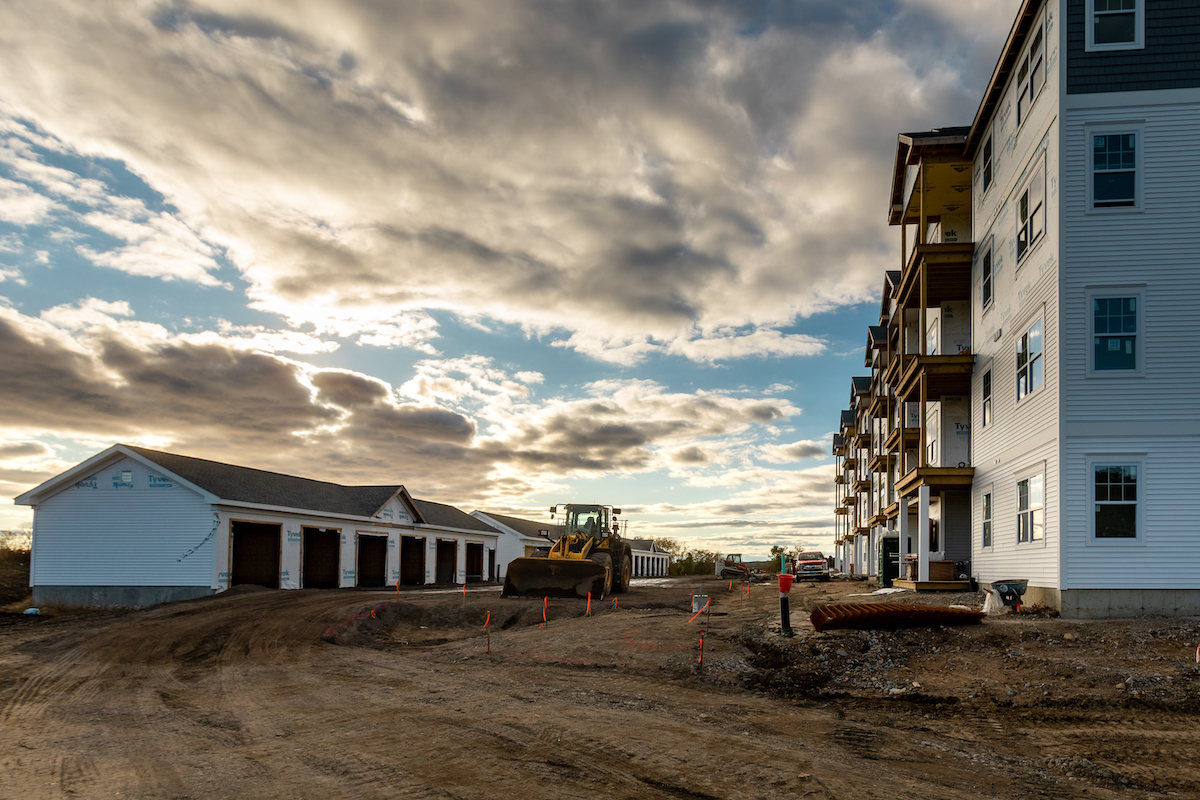STAKEHOLDER ENGAGEMENT
ECONOMIC DEVELOPMENT COMMITTEE
seCTer initiated the stakeholder engagement process by convening a meeting of its Economic Development Committee (EDC) and seCTer staff in November 2021 to discuss how best to organize focus groups and data sources and amend CEDS 2017 to incorporate the priorities of equity and economic resilience. It was decided the next CEDS would be an update of CEDS 2017 to improve upon seCTer’s regional experience in implementing CEDS 2017, while also acknowledging the impact of unprecedented pandemic health and safety restrictions during the prior two years on economic development activities and interactions. seCTer’s then new executive director Paul Whitescarver, the recently retired Commanding Officer of the U.S. Naval Submarine Base – New London, identified helping

the region recover from the economic fallout caused by the pandemic and updating CEDS 2017 as top priorities.
During his service as Commanding Officer of the Submarine Base, Mr. Whitescarver made extraordinary efforts to establish positive relationships with the region’s municipalities, agencies and community groups. The result was the 2018 Great American Defense Community Award to Southeastern Connecticut from the Association of Defense Communities. Early on Mr. Whitescarver made clear that maintaining strong ties to the region’s municipalities, federal/state/regional agencies and departments, community groups, and businesses would also be a priority under his tenure.
The EDC is a large committee of 25+ members with a nearly 50-50 representation of board members and other committed parties including the U.S. congressional district delegate. In December 2021 EDC formed the CEDS Strategy Committee. The ad hoc group coalesced around an urgency to incorporate three principal concepts: Recovery & Resiliency (assessing economic disruptions such as the pandemic and follow-on recommended actions), Equity & Inclusive Economic Development, and Alignment (integrating the CEDS with other plans already underway), each as they apply to the region (Figure 23).
The CEDS Strategy Committee engaged in an internal Strengths, Weaknesses, Opportunities and Threats (SWOT) exercise and analysis that began with a review of the SWOT analysis completed for CEDS 2017. Members considered these questions: Do you agree with the strengths, weaknesses, opportunities and threats from 2017? Would you add any? Did the pandemic change your thoughts? Would you change the priority or level of importance from 2017?
The Strategy Committee determined that there were certain 2017 themes that remained relevant in 2022. Chief among them were:
- Continued critical need to attract and retain skilled workers and to train more residents to perform work of steady livable-wage jobs in Southeastern Connecticut; and
- Continued need for increased regional communication, coordination and collaboration between organizations and municipalities to integrate and streamline systems and make better use of valuable regional resources.

The EDC is a large committee of 25+ members with a nearly 50-50 representation of board members and other committed parties including the U.S. congressional district delegate. In December 2021 EDC formed the CEDS Strategy Committee. The ad hoc group coalesced around an urgency to incorporate three principal concepts: Recovery & Resiliency (assessing economic disruptions such as the pandemic and follow-on recommended actions), Equity & Inclusive Economic Development, and Alignment (integrating the CEDS with other plans already underway), each as they apply to the region (Figure 23).
The CEDS Strategy Committee engaged in an internal Strengths, Weaknesses, Opportunities and Threats (SWOT) exercise and analysis that began with a review of the SWOT analysis completed for CEDS 2017. Members considered these questions: Do you agree with the strengths, weaknesses, opportunities and threats from 2017? Would you add any? Did
the pandemic change your thoughts? Would you change the priority or level of importance from 2017?
The Strategy Committee determined that there were certain 2017 themes that remained relevant in 2022. Chief among them were:
- Continued critical need to attract and retain skilled workers and to train more residents to perform work of steady livable-wage jobs in Southeastern Connecticut; and
- Continued need for increased regional communication, coordination and collaboration between organizations and municipalities to integrate and streamline systems and make better use of valuable regional resources.

The Strategy Committee then applied the lens of Southeastern Connecticut’s 2022 economic realities and resilience, equity and alignment principles and identified the following regional priorities and/or concerns for exploration throughout the stakeholder engagement process:
-
Disproportionate representation of SECT EDD communities in the region on the 2021 Distressed Municipalities List
-
Extremes of inequity present in the region
-
Diversity of stakeholder engagement
-
Wraparound services for the workforce
-
Definition of economic resiliency for Southeastern Connecticut
-
Coordination of federal funding resources
-
Human capital capacity in smaller towns
-
Support for the region’s growing offshore wind industry
-
Regional coordination
-
Regional alignment
PULBIC INPUT & ENGAGEMENT
To reach a broad group of citizens and leaders in the seCTer region, it was decided the public SWOT would be accomplished through a three-step process starting with a regional survey, then focus groups and, finally, targeted interviews. The Strategy Committee formed a Core Team to curate a list of stakeholders for engagement in the 2022 SWOT. With a commitment to bringing new voices to the CEDS process, the Core Team identified 300+ stakeholders and organized the following set of economically imperative topics to target during all segments of public outreach: Workforce, Development & Support Services, Equitable Housing, Real Estate Development, Regional & Local Capacity, and Energy.
REGIONAL SURVEY
As a failsafe to engaging a vast array of perspectives, stakeholders were organized by North American Industry Classifications System (NAICS) codes. A response rate of 32 percent to the survey was achieved.
Key findings gleaned from the regional surveys were:
- The most pressing economic issue facing Southeastern Connecticut in 2022 is a lack of available/qualified workforce. This is followed closely by a lack of affordable housing.
- The top three sectors key to the success of economic recovery, growth and resilience in the region are Housing, Infrastructure and Health & Social Services.
-
The historically significant industry clusters in the region needing the most attention are (in order) Agriculture, Fishing & Food Production, Maritime (excluding defense shipbuilding), and Tourism.
-
The top three elements of success most critical to moving Southeastern Connecticut forward are Collaborative Aligned Leadership, Shared Visions and Goals, and Adequate Funding. Private Sector Support and Engagement followed as a close fourth.
-
The leading approach selected to be the most effective in creating an update to CEDS 2017 that is engaging and user-friendly is a Concise Roadmap report with clear recommendations, outcomes and actions.
-
When survey respondents were invited to share additional thoughts the following five themes received the most frequent comments: Affordable Housing, Workforce, Diversity, Equity & Inclusion, Transparency & Communication, and Tourism.
FOCUS GROUPS
In lieu of organizing focus group participants by location, it was decided to target the topics of shared concern and significance identified in the internal CEDS Strategy Committee SWOT and survey results and analyses.
Key findings from the focus groups were:
- There is a lack of large properties available for large-scale development.
- Local opposition to meeting the region’s housing needs requires adjustment.
- College students leave when they graduate because they can’t find affordable housing.
- Public utilities are a strength of the region due to overall reliability.
- Expanding businesses is hindered by high cost of energy, gas and oil.

- Opportunities exist for federal/state/local officials and NGOs to be more creative about how to attract businesses to the region.
TARGETED INTERVIEWS
The public input process concluded with one-on-one interviews with six subject matter experts closely associated with the targeted economic development topics of Energy, Real Estate Development, Workforce/Wraparound Services, Local and Regional Government Capacity.
Key findings from the targeted interviews were:
- There is a lack of affordable housing across socio-economic status.
- There is a lack of formal programs for real estate development, and current redevelopment incentives and financing programs are insufficient.
-
With the increased need for workers, there is an increased need for improved workforce training across all trades that goes beyond technical high schools.
-
There is a shortage of childcare practitioners, and shrinking availability is not projected to meet increasing demand.
-
Partnerships and collaboration to leverage funding for energy projects are both important and critical to project success.
-
Government regulatory environments affect the ability to put affordable housing units on the ground.
-
More municipal funding is needed to build necessary infrastructure such as wells, water and sewer pipes, gas and electrical lines, etc.
